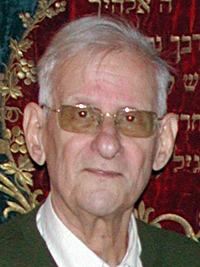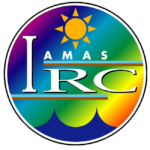
Joachim Joseph
1931–2008
Joachim Joseph of Tel-Aviv University was born on 31 March 1931, in Berlin, Germany. During World War II, Joachim (or Yoya as he preferred to be known) and his whole family were imprisoned in the Bergen-Belsen prison camp. In 1945, a maternal uncle, who had fled to Switzerland, secured fake passports for his family, then sent the passports to the German Red Cross for delivery. One morning during lineup, the camp commandant asked Yoya if he were a citizen of a certain Latin American country and he promptly answered “yes, of course!” Months later, the family sailed to Palestine to pioneer the country of Israel, where Yoya grew up to excel in physics, earn a doctorate in atmospheric physics from the University of California, Los Angeles, and eventually become a professor at Tel Aviv University specializing in radiation, aerosols, and clouds.
The kind of grit that enabled Yoya to survive the camp gave him a certain self-confidence and audacity that characterized his career. He was a pioneer in many areas. Around 1974, he developed the delta-Eddington approximation for radiation transfer jointly with Warren Wiscombe and Jim Weinman; this approximation is still used in many climate models. In 1976, working at NCAR, Yoya was the first to study the impact of aerosols in a climate model (the NCAR Global Climate Model) but this work was so far ahead of its time that he had difficulty getting it published. With Bob Cahalan, Yoya pioneered the use of fractal methods to analyze clouds in Landsat images. The fractal character of clouds is now widely recognized, but at the time scientists were still modeling clouds as cubes. Yoya was an expert on desert aerosols and became principal investigator on the MEIDEX remote sensing experiment on the Space Shuttle Columbia to measure aerosols from African dust storms over the Mediterranean and their relation to rainfall.
Yoya was also a well-known figure on the international scene and was active in the International Radiation Commission as well as many other forums. In 1980, the IRC appointed him as its first “rapporteur on aerosols” and in 1981, with Hermann Gerber, he cochaired the first Working Group on Aerosols, leading to a far-reaching plan for aerosol research coordinated through the World Climate Research Program.
Yoya’s concentration camp experience returned to bookend his life in a remarkable way. A rabbi in the camp trained Yoya for his bar mitzvah, then afterward gave him a tiny Torah scroll for safekeeping, extracting a promise to tell the world what happened in the camp. Yoya did so in a Jerusalem Post article in 1951, but then deeply buried his memories. Over 40 years later, Ilan Ramon, the first Israeli astronaut, spotted the scroll in Yoya’s house and asked if he could take it up on Columbia, which also carried the MEIDEX aerosol experiment that had been spearheaded by Yoya and Zev Levin. The scroll was shown to billions of people in a television broadcast from the shuttle, fulfilling Yoya’s promise to the rabbi. But the shuttle then tragically broke apart on re-entry in 2003, resulting in the death of Ramon and all onboard. Yoya wrote the entire story into a children’s book, Reach for the Stars: A Little Torah’s Journey, with Sylvia A. Rouss, and Rosalie Ofer, now being made into a documentary movie.
Yoya is survived by his longtime companion and wife Stella (their 50th anniversary was in 2007); his daughters, Iris and Gili; his sons-in-law, Ronen and Pablo; and six grandchildren, Yuval, Chen, Liad, Tal, Gal, and Yam, for whom he was moved to share his early life memories.
Joachim Joseph and Tony Slingo served the climate and radiation, and the wider community, for long years as inventive and hard-working scientists. Their character and their families will continue to inspire many scientists, as well as many in the larger global community. We lost two stimulating minds and two good friends.—Robert F. Cahalan, Teruyuki Nakajima, and Hans-Jürgen Bolle.
